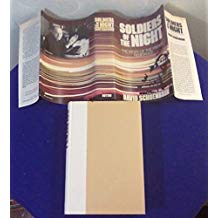“Good God! It’s a woman,” exclaimed the young French officer upon meeting Marie-Madeleine Fourcade. He wasn’t the only person surprised upon first meeting her. Marie-Madeleine was a 32-year-old mother with two small children in 1940. Yet she eventually led a Resistance network that operated from Normandy to North Africa.
In 1940 after the defeat of France, she fled Paris with her maid, her children, and friends with instructions to meet her former boss in Vichy. Her former boss, Georges Loustaunau-Lacau, was a decorated WWI officer who owned a publishing house where Marie-Madeleine was his secretary.
Loustaunau-Lacau bamboozled the Vichy government into funding his efforts to resettle soldiers returning from the front. But he actually used the money to gather recruits for his resistance efforts. He appointed Marie-Madeleine as his second in command because he wanted someone he could trust.
She initially doubted her ability to command respect among the military men who formed the backbone of the group, but it didn’t take long to convince them that she had the innate authority, common sense, and steadiness to lead the group.
In 1941, after Loustaunau-Lacau was arrested, Marie-Madeleine took over command of the entire resistance network, now called the Alliance. The network would eventually expand to about 3,000 people. The members adopted animal names as their code names. Marie-Madeleine became “Hedgehog”.
She organized small teams that gathered information about the Nazi occupiers and their collaborators. The information was relayed to London via regular radio reports and couriers. The quality of the intelligence quickly converted her British contacts into enthusiastic supporters. They continuously upgraded the radio sets, weapons, and training provided to the Alliance.
In November 1942, Marie-Madeleine was arrested in Marseille by Vichy policemen and a Gestapo agent. As she watched one of her team being threatened, all the stress and anxiety boiled up in her. Enraged, she attacked the Gestapo agent, clawing his face. He grabbed a chair and held it in front of him to protect himself. He was saved when Marie-Madeleine ran to her bedroom where she began eating papers of incriminating evidence. After a night of interrogation, the Vichy policemen released her.
Marie-Madeleine sent thousands of Resistance workers on spying missions in occupied France. The information they gathered included the plans to the U-Boot docks in northern France. They also provided a detailed map of the coastal defenses of Normandy which was used by the Allies when planning Operation Overlord. The Resistance worker who gathered the information was murdered in Caen on June 7th about 24 hours after D-Day began.
In 1943, she lost about a third of Alliance, many of them personal friends, as they were betrayed by infiltrators or caught in routine Gestapo sweeps. She gathered the remaining agents and set up new networks, but the strain of her activities left her emaciated from lack of food and anxiety. She seldom slept and when she did, she suffered from nightmares.
After France was liberated in 1944, the Alliance searched every prison in France to learn the fate of their members who had been arrested. Teams also followed the advancing Allied troops to search the death camps and prisons in Germany. They learned that many Resistance workers were murdered literally hours before their camps or prisons were liberated. Loustaunau-Lacau was one of the fortunate few who returned after surviving Mauthausen concentration camp.
Marie-Madeleine survived the war and returned to Paris. She remained politically active in social justice causes and served as a Member of the European Parliament in the early 1980’s. She died on July 20, 1989, a national hero.
The English title of Marie-Madeleine’s autobiography is Noah’s Ark: The Secret Underground (1973, original English translation). For a general account of all French Resistance activities, see Soldiers of the Night: The Story of the French Resistance, by David Schoenbrun (1980).
Want to receive this blog straight to your inbox? Sign up for my mailing list.




